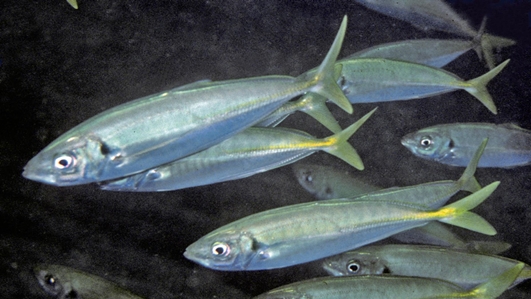General Description
One of three species of the genus Trachurus found along the southern coast. The three are difficult to distinguish. All have strong scutes in the straight part of the lateral line, and some scutes in the curved part, long falcate pectoral fins, an additional lateral line just below the dorsal fin base to the beginning of the second dorsal fin; anterior raised part of the lateral line is parallel to the body margin, accessory lateral line below base of dorsal fin terminating below 1st-5th (usually 1st-2nd) segmented rays. Blue green above, blending to silvery white below the midline, with yellow tinges on scutes and fins; iridescent brown vertical bands on sides; a black spot dorsally on hind margin of gill cover. To 50 cm.
Biology
These planktivores form large schools of individuals.
Habitat
From surface waters to depth of 500 m.
Open water
Distribution guide
New Zealand and southern Australia.
Species Group
Fishes › Trevallies and allies
Depth
Shallow (1-30 m)
Deep ( > 30 m)
Water Column
Max Size
50 cm
Commercial Species
Yes
Global Dispersal
Recorded in Australia
Conservation Status
- DSE Advisory List : Not listed
- EPBC Act 1999 : Not listed
- IUCN Red List : Not listed





